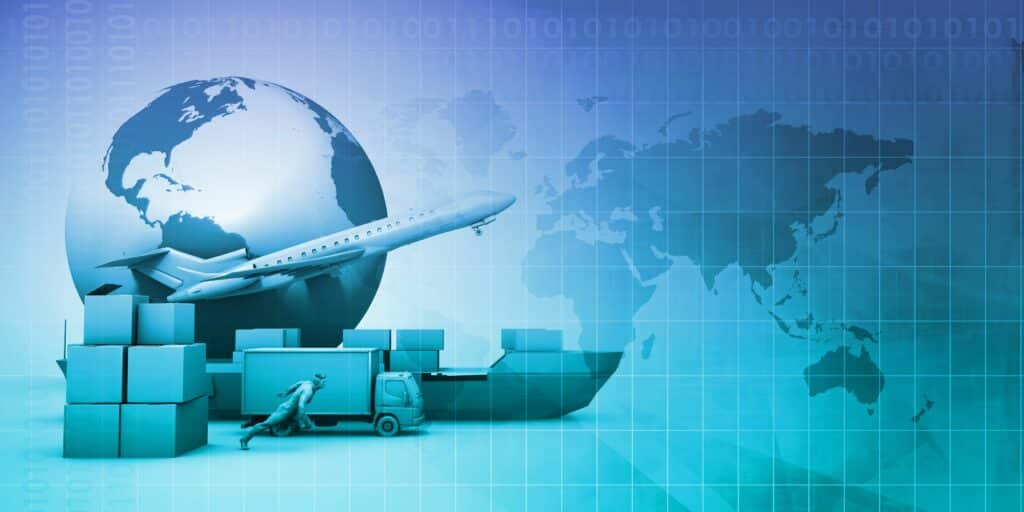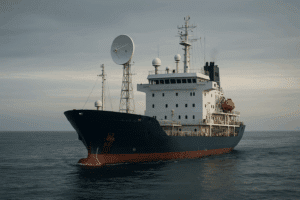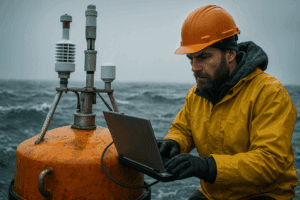The shipping industry, which accounted for 3% of the global greenhouse gas emissions (GHG) such as carbon dioxide, and also worsens water and underwater noise pollution, is considering sustainability as a priority.
To make sea transportation more sustainable and mitigate its contribution to climate change, the active participation of all stakeholders is necessary. In this regard, shippers also have a major role to play, and this requires a comprehensive understanding of the problem and visibility into the environmental impact of their shipments.
What are the impacts of maritime transport worldwide?
The merchant ships trading has a significant impact on the environment, society, and economy. Nevertheless, several challenges arise, which need to be addressed in order to ensure its sustainability, efficiency, and competitiveness.
Ecological impact
Ocean transportation is responsible for a significant amount of greenhouse gas emissions, which contribute to climate change. The total emission expressed in CO2e (carbon equivalent) of carbon dioxide (CO2), methane (CH4), and nitrous oxide (N2O), reached 833 million metric tons in 2021.
Marine heavy fuel oil is a substantial CO2 emitter since it contains roughly 86% carbon. This means that for every ton of fuel burnt, approximately 3.15 tonnes of CO2 are released into the atmosphere.
Therefore, the International Maritime Organization (IMO) has set a target to cut down the carbon intensity of international shipping by at least 40% by 2030 and to lower GHG emissions from ships by at least 50% by 2050 compared to their 2008 levels. These aspects constrain its stakeholders to reduce fossil fuel and energy consumption and explore alternative sources of energy, such as liquefied natural gas (LNG), and hydrogen, as well as renewable sources such as solar and wind power.
Ocean carriage of goods also generates underwater noise, and the risk of oil spills and pollution of marine ecosystems, which can have harsh consequences on the environment and wildlife.
Shipbuilders and operators are working to design quieter vessels, utilizing a variety of noise-reducing technologies such as electric propulsion, special coatings, and new propellers with optimized blade shapes or slower rotational speeds. They are also implementing advanced noise control systems and adopting more sustainable practices, such as slow steaming to optimize vessel speed and reduce noise emissions.

Social Impact
The shipping sector employs millions of people worldwide, both on land and at sea, across a range of roles in shipping companies, ports, logistics, and other maritime services. Additionally, sea shipping is vital for transporting essential resources such as food, energy, and raw materials to communities around the world. However, the presence of ships and ports may have negative social effects on surrounding communities, especially increased traffic, and air, water, and noise pollution.
Nevertheless, it also raises concerns regarding working conditions, especially the need to ensure the workers’ safety, health, and well-being. IMO has developed international regulations and standards for seafarers. The SOLAS Convention (“International Convention for the Safety of Life at Sea”) is one of the most critical international agreements related to the safety of vessels engaged in international voyages, including merchant’s vessels. Multiple topics are covered, including construction, equipment, safety management, and emergency procedures.
Additionally, shipping companies must address illegal activities that may take place on board vessels.
Economic Impact
Lastly, seaborne transportation is a significant driver of economic growth in many countries, creating employment opportunities and promoting the development of international trade. In the European Union, for example, it represents 80% of total exports and imports in terms of volume and about 50% in terms of value. It is estimated to contribute around 2–3% to the global GDP.
However, shipping companies incur significant expenses associated with vessel operations, maintenance, repairs, and compliance. In order to remain competitive and meet the increasing demand for transport services by sea, they must continually seek ways to optimize their operations, reduce costs, enhance safety measures, and improve the overall customer experience.
Why is it crucial to have visibility on these impacts?
Having visibility on the impacts of their activities is essential for the shipping companies, for at least three main purposes:
- Identify areas where improvements can be made in terms of carbon footprint and social responsibility.
- Make informed decisions, that combine operational efficiency, cost reduction, and environmental protection.
- Monitor the effectiveness of their sustainability initiatives closely and make necessary adjustments to their supply chain management practices based on the insights gained.
With a clear understanding of how their actions affect the communities where they operate and the world at large, companies can develop appropriate strategies for mitigating their negative effects and fostering positive change.
However, the visibility of its impacts is a challenge for the maritime industry because it involves a complex network of factors and data that are often difficult to gather and analyze. In addition, there are many different stakeholders involved in the global supply chain: shipbuilders and owners, shipping lines and their agents, other carriers, freight brokers, freight forwarders and other logistics services providers, port authorities and operators, customs authorities, regulators, and environmental organizations.
The role of shippers in reducing the global supply chain’s environmental impact

Despite their significant contribution to the global supply chain, the role of shippers in reducing the environmental impact of maritime carriage is often overlooked. As key players in the supply chain, shippers also have a responsibility to adopt sustainable practices and reduce their emissions and waste.
To this end, shippers can take the following steps:
- Prioritize low-carbon transportation solutions by considering the carrier’s environmental performance and choosing companies with their own sustainability strategies.
- Optimize shipment planning by cooperating with the carrier and consolidating multiple small shipments into larger ones. This reduces fuel consumption and GHG emissions while simplifying tracking and avoiding costly inefficiencies or delays.
- Implement sustainable packaging practices by using recyclable or biodegradable materials and minimizing unnecessary packaging to reduce waste and emissions.
- Monitor emissions from the supply chain in real-time and transparently report data to stakeholders such as investors, customers, and regulators.
- Reduce the carbon emissions from their own operations, apart from shipments, by investing in electric vehicles, renewable energy, and other low-carbon technologies.
- Support and advocate for sustainable practices, participate in industry-wide initiatives and provide input for the continuous update of regulatory frameworks.
By implementing these strategies, shippers can contribute to a more sustainable and responsible supply chain.
How can shippers improve their visibility on their carbon footprint?
Shippers require comprehensive and real-time information to enhance their visibility into the environmental impact of their operations and improve their logistics management practices. Apart from meeting their sustainability objectives, data are very useful to shippers for various purposes:
- Make sure that their shipments comply with the international and local regulations and guidelines imposed on the transportation and logistics sector in order to mitigate environmental and social harm.
- Respond to the increasing demand from consumers who are becoming more aware of the environmental impact of their purchases. As a result, they are more likely to favor companies that are dedicated to sustainability. By communicating transparently about their efforts, shippers can improve trust and loyalty among existing customers and business partners and may attract new customers who share the same values.
- Save costs. By optimizing their freight and reducing empty miles and the amount of packaging used, shippers can save money on freight rates and materials.
They can utilize various technologies that enable them to leverage both historical and real-time data.
Artificial intelligence (AI)
It is a powerful tool that enables the analysis of vast amounts of data and the identification of patterns that may be difficult to detect through traditional analysis methods. Sinay offers a range of AI-based modules that are designed to assess underwater noise, water quality, and air quality in a user-friendly manner. By utilizing appropriate sensors, shippers can monitor various indicators and aggregate data on a central dashboard.
Furthermore, Sinay provides a range of APIs that enable maritime sector professionals to develop new dedicated solutions that can be linked to their own ERP or their customers’ internal tools. This digital platform allows real-time data tracking, analysis, and reporting on shippers’ environmental performance (fuel consumption, emissions…).
Internet of Things (IoT)
Connected devices can be installed on various equipment and installations in order to collect data on emissions, and other environmental factors. Data is then transmitted in real-time to a centralized shore-based system for analysis, allowing shippers to get more visibility of their environmental impact and make more informed decisions about their operations.
Big data analytics
The volume of data generated by the entire supply chain can be overwhelming. Thus, companies must invest in advanced analytics and data management tools to effectively harness the information at hand.
Big data represents real progress in analyzing large amounts of data collected from IoT devices, as well as satellite data and ready-to-use reports from third-party specialists such as Sinay. The Metocean Analytics tool is an example of a management tool.
By cross-referencing information from these different sources, shippers can gain valuable insights into their environmental performance and identify areas for improvement.
Blockchain
Blockchain technology has the potential to create a secure and unchangeable record of a product’s carbon footprint from origin to destination, including emissions and other essential metrics. This increased transparency and accountability can foster better cooperation among various stakeholders in the shipping industry.
Transportation Management System (TMS)
Most shippers, warehouses, supply chain managers, customs brokers, transportation intermediaries, and carriers rely on a Transportation Management System (TMS) to have real-time end-to-end visibility into that aspect of their activities. This automated platform enables them to optimize their shipment management and improve their supply chain efficiency.
Using a TMS offers several benefits to supply chain leaders, such as Amazon, as well as to small and medium-sized enterprises (SMEs):
- Shippers can monitor the location and condition of their shipments, receive alerts about potential delays, and adjust their plans accordingly, ensuring streamlined operations with minimal dwell time.
- Shippers can provide accurate and timely information to end customers about shipment status and estimated arrival or delivery times (ETA or ETD), ensuring the best possible customer service.
- Additionally, they have access to 360° visibility of freight rates, transit times, and carrier performance. This information facilitates shipment consolidation and route optimization, leading to significant cost savings.
- Automated processes help them avoid errors resulting from manual intervention and supply chain disruptions.
Conclusion
To create an environmentally and socially sustainable future for the shipping industry, shippers need visibility into the impacts of their activities. This will empower them to take responsibility for their actions and make informed decisions. Meeting these challenges requires companies to invest in new technologies, such as automated visibility platforms.
Frequently Asked Questions about Shipments Visibility
Tracking the impact of shipments can help shippers identify areas where they can reduce their environmental footprint, improve social responsibility, and optimize their supply chain for maximum efficiency and cost savings. It can also help them make more informed decisions and better meet the needs of their customers.
Shippers can use a variety of tools and strategies, including carbon footprint calculators, supply chain mapping, social impact assessments, and data analytics.
These tools can provide insights into factors such as emissions, energy use, waste generation, labor practices, and community impacts.
By tracking the impact of shipments, shippers can identify areas where they can reduce waste, increase efficiency, and streamline their supply chain.
This can result in cost savings through reduced energy and resource consumption, optimized transportation routes, and improved labor practices.
Sharing impact data can help build trust with customers and stakeholders by demonstrating a commitment to social and environmental responsibility. It can also provide valuable insights and feedback that can help shippers improve their operations and products.
The industry is taking a variety of approaches to improve visibility and sustainability, including developing industry standards and certifications, adopting new technologies such as blockchain and artificial intelligence, and collaborating with stakeholders across the supply chain to identify and address challenges.
Focus on data to make effective decisions
Discover our modules
Environmental Monitoring
Monitor air quality in real-time, be alerted when a threshold is reached & easily comply with regulation thanks to the automated reports.
Monitor water quality in real-time, predict and avoid water pollution & comply with regulations thanks to the automated reports.
Deliver a preliminary metocean analysis and the associated report in jut a few minutes.
You may also be interested by those others environment application :

